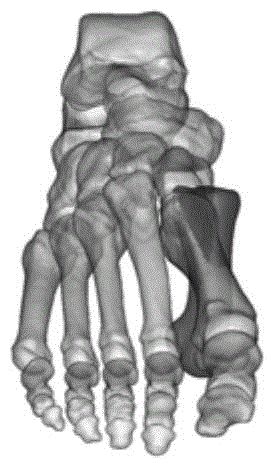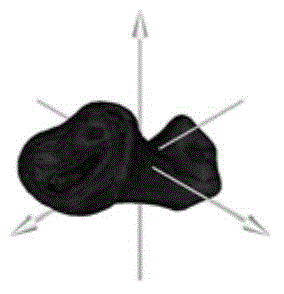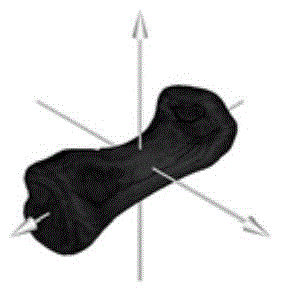Organ positioning method based on sectional image reconstruction
A technology of tomographic imaging and positioning method, which is applied in the field of organ positioning, can solve the problems that a person cannot cross the same river twice, and a person maintains a uniform posture.
- Summary
- Abstract
- Description
- Claims
- Application Information
AI Technical Summary
Problems solved by technology
Method used
Image
Examples
Embodiment 1
[0039] For human organs, the test position and posture are changed, but this change will not change the shape and structure of the organ. The centroid of human organs is not affected by the scanning position and pose. The main axis of inertia of an object with asymmetric shape and non-uniform mass distribution is also unique. Human organs are asymmetric bodies with non-uniform values. Therefore, the main axis of inertia of human organs is unique. This uniqueness has nothing to do with the test position and posture. According to the invariance of coordinate transformation of geometric bodies, the body coordinate system established based on the main axis of organ inertia in the present invention can realize the positioning of organs.
[0040] Combine below Figure 4 The method adopted in this embodiment is specifically described as follows.
[0041] 1. Scanning equipment
[0042] A tomographic image containing the organ to be located is obtained by scanning such as CT or MRI. ...
PUM
 Login to View More
Login to View More Abstract
Description
Claims
Application Information
 Login to View More
Login to View More - R&D Engineer
- R&D Manager
- IP Professional
- Industry Leading Data Capabilities
- Powerful AI technology
- Patent DNA Extraction
Browse by: Latest US Patents, China's latest patents, Technical Efficacy Thesaurus, Application Domain, Technology Topic, Popular Technical Reports.
© 2024 PatSnap. All rights reserved.Legal|Privacy policy|Modern Slavery Act Transparency Statement|Sitemap|About US| Contact US: help@patsnap.com










